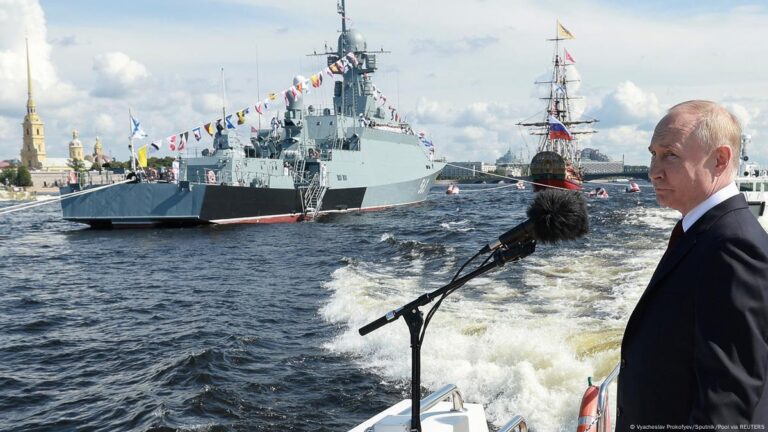In a demonstration of growing maritime cooperation, Russian and Chinese navies have conducted joint artillery and anti-submarine exercises in the strategically significant Sea of Japan, according to Reuters. The drills underscore the deepening military ties between the two nations amid heightened regional security tensions and serve as a clear message to other powers operating in the Indo-Pacific. This collaboration marks one of the most extensive combined naval maneuvers between Moscow and Beijing in recent years, highlighting their shared interests in enhancing naval capabilities and asserting presence in contested waters.
Russian and Chinese Navies Conduct Joint Artillery and Anti-Submarine Exercises in Sea of Japan
In a demonstration of enhanced maritime cooperation, the Russian and Chinese navies have recently conducted joint artillery and anti-submarine warfare drills in the strategically significant Sea of Japan. These exercises included live-fire artillery practice, coordinated maneuvering, and simulated anti-submarine operations aimed at improving tactical integration and readiness between the two fleets. Both navies deployed advanced surface combatants, submarines, and naval aviation units to effectively simulate a broad spectrum of combat scenarios. Analysts note that the drills underscore the growing military collaboration amid shifting geopolitical dynamics in the Asia-Pacific region.
Key components of the operation included:
- Live-fire artillery training: Surface ships engaged designated maritime targets with precision-guided munitions.
- Anti-submarine warfare maneuvers: Coordinated tracking and neutralization exercises involving helicopters and sonar-equipped vessels.
- Joint command and control: Real-time data sharing facilitated seamless communication between Russian and Chinese task groups.
| Aspect | Russian Navy | Chinese Navy |
|---|---|---|
| Surface Combatants | Frigates, Corvettes | Destroyers, Frigates |
| Submarine Types | Diesel-electric | Diesel-electric, Nuclear |
| Air Support | Naval Helicopters | Naval Helicopters, Maritime Patrol Aircraft |
Strategic Implications of Increased Naval Cooperation Between Moscow and Beijing
The collaboration between Moscow and Beijing in the Sea of Japan marks a significant escalation in their naval synergy, reflecting broader geopolitical ambitions. This growing partnership signals a strategic realignment aimed at counterbalancing US naval dominance in the Indo-Pacific region. By conducting coordinated artillery and anti-submarine drills, both navies demonstrate enhanced interoperability and shared tactical doctrines, thereby increasing their collective deterrence capabilities. Such activities underscore the intent to project power beyond their immediate regional waters, complicating the maritime security environment and challenging established naval alliances.
Key strategic implications include:
- Power projection: The drills enhance the ability to operate jointly in contested waters, extending operational reach.
- Technological exchange: Sharing anti-submarine warfare techniques can accelerate advancements on both sides.
- Regional influence: A united presence disrupts the balance in Northeast Asia, pressuring neighboring countries diplomatically and militarily.
- Deterrence posture: A credible naval partnership signals resolve against perceived encroachments by rival powers.
| Aspect | Impact | Naval Focus |
|---|---|---|
| Joint Exercises | Improved coordination | Artillery Fire & Anti-Submarine Warfare |
| Force Projection | Regional deterrence | Long-Range Deployment |
| Technological Exchange | Enhanced capabilities | Detection and Tracking Systems |
Recommendations for Regional Stability and Enhanced Maritime Security Measures
Amid rising naval activities in the Sea of Japan, it becomes imperative for regional actors to engage in transparent diplomacy and foster confidence-building measures to prevent miscalculation or unintended escalation. Joint communication channels between navies, including real-time information sharing on exercises and patrols, can reduce the risk of accidents in this strategically sensitive area. Furthermore, multilateral forums focusing on maritime security should be revitalized to address emerging threats such as underwater surveillance, cyber warfare, and hybrid tactics that increasingly complicate conventional naval operations.
Practical steps toward enhancing maritime security also include:
- Establishing standardized conduct protocols during joint or parallel exercises to clarify operational boundaries and intentions.
- Implementing coordinated search and rescue drills that include diverse stakeholders, thus building mutual trust and operational interoperability.
- Investing in joint maritime domain awareness technologies such as satellite monitoring and shared radar networks to ensure timely threat detection.
- Encouraging confidence-inspiring initiatives through academic and naval officer exchanges to deepen understanding of regional security concerns.
| Recommendation | Objective | Expected Outcome |
|---|---|---|
| Transparent Naval Exercises | Reduce risk of misinterpretation | Lower tension and avoid confrontation |
| Information Sharing Platforms | Enhance situational awareness | Timely response to It looks like the provided table got cut off at the last entry. Based on the existing content and context, I can help complete and summarize the recommendations for maritime security in the Sea of Japan:
Recommendation | Objective | Expected Outcome If you want, I can also help format this properly or expand on any of these points. Would you like me to do that? The ConclusionThe joint drills conducted by the Russian and Chinese navies in the Sea of Japan underscore the growing military collaboration between the two nations amid shifting geopolitical dynamics in the Asia-Pacific region. As tensions continue to simmer over territorial disputes and strategic interests, such exercises signal a shared intent to bolster maritime capabilities and assert their presence in key waterways. Observers will be closely monitoring future developments to assess the implications for regional security and the balance of power. |




